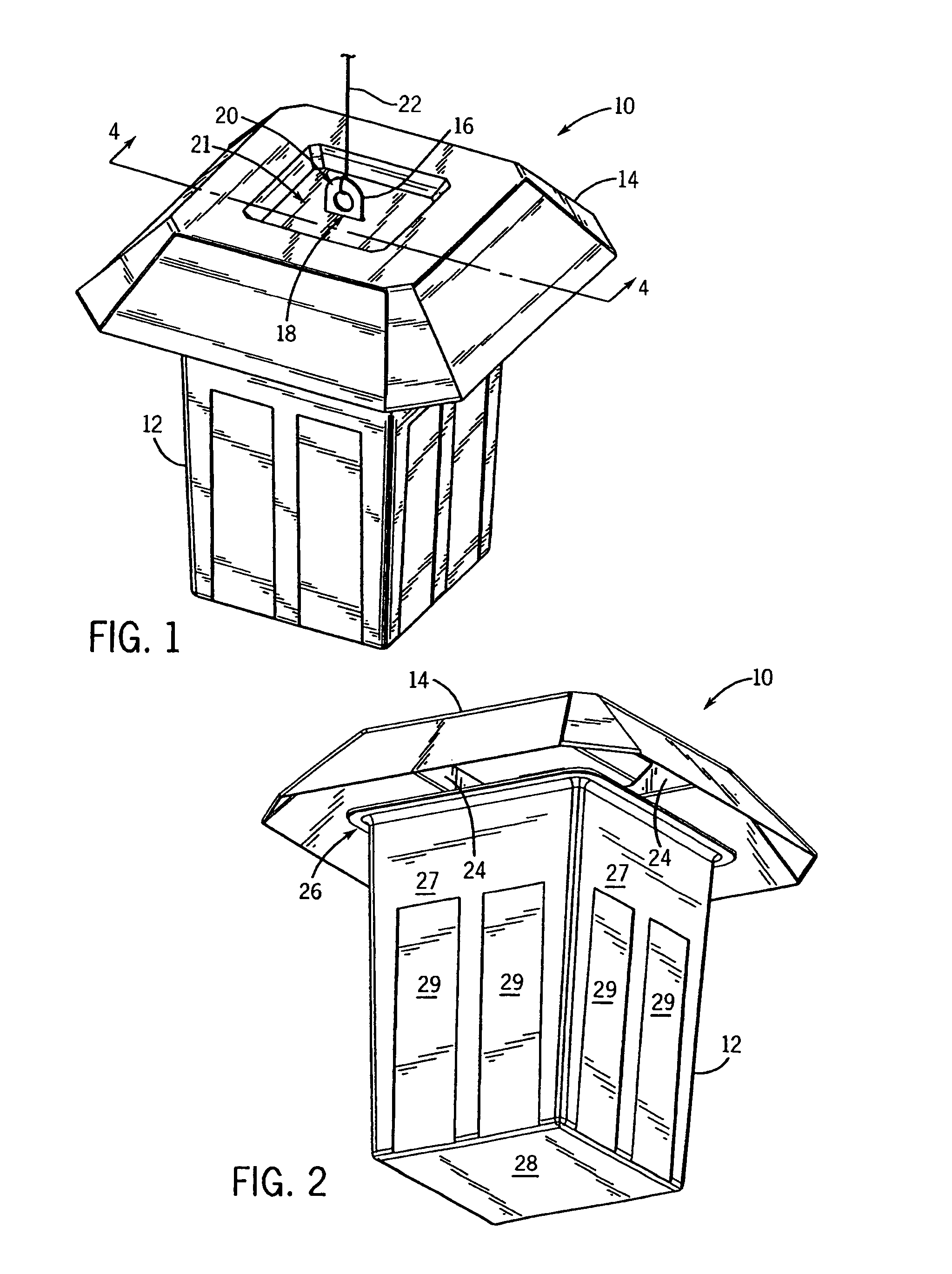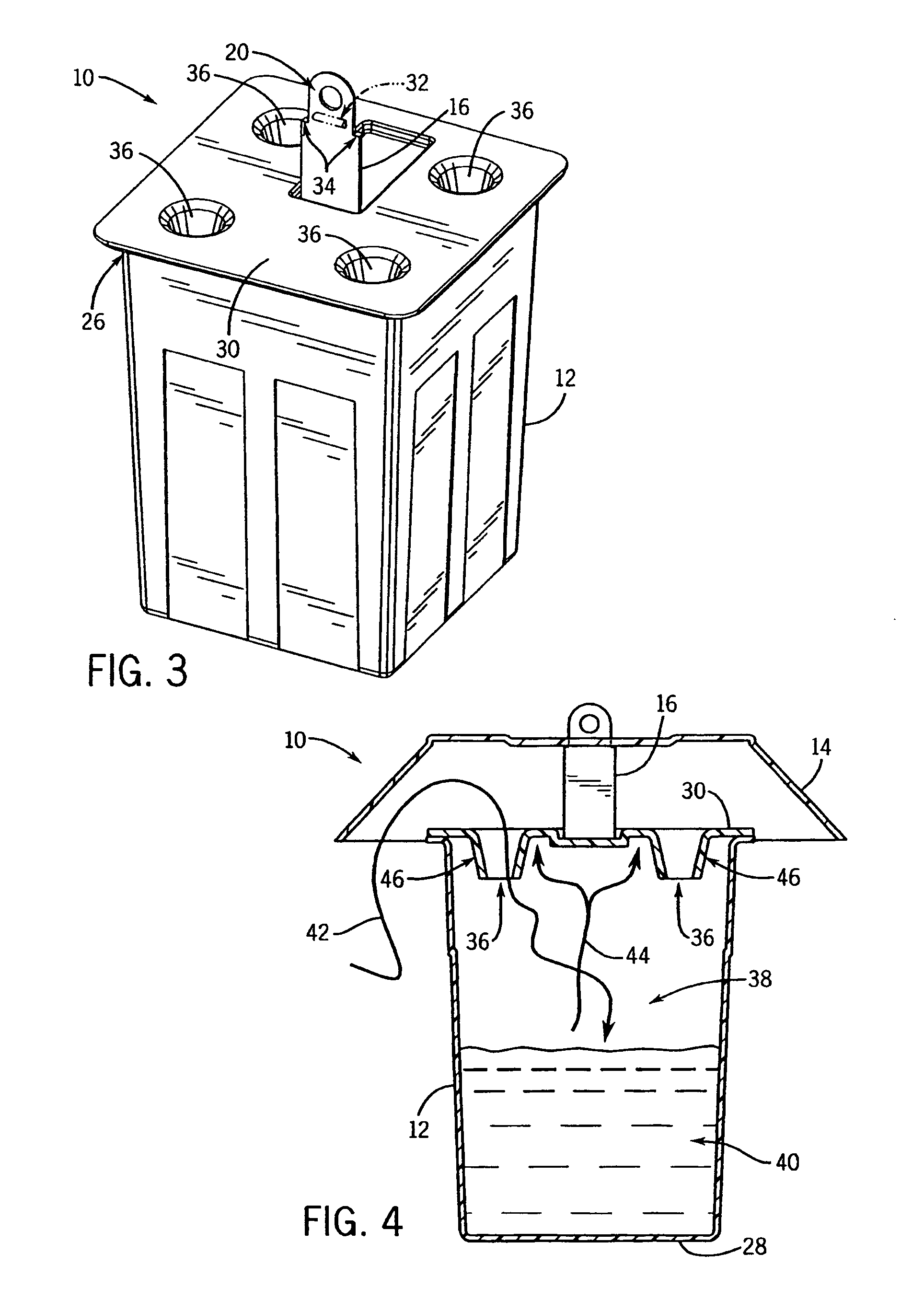Flying insect trap
a technology for flying insects and traps, applied in insect catchers and killers, animal hunting, animal husbandry, etc., can solve the problems of non-toxic attracting liquid, non-optimal concentration, and time-consuming type of systems, and achieve the effects of preventing leakage of attracting materials, reducing assembly steps, and low cos
- Summary
- Abstract
- Description
- Claims
- Application Information
AI Technical Summary
Benefits of technology
Problems solved by technology
Method used
Image
Examples
Embodiment Construction
[0031]FIGS. 1–6 depict a first insect trap 10 of the present invention. It is formed from a housing 12 and a shield 14. The shield 14 is mounted via a stand 16 on the housing 12. In the fully assembled form of the trap (FIG. 1) the upper end of the stand 16 extends through a mounting slot 18 in the shield 14 to provide a hole 20 for a hanger 22. The hanger 22 can be a rope, a chain, or a hook. An opposite end of the hanger 22 can be affixed to a support (not shown) such as a gutter, eave, pole or outside light. There can be a depression 21 in the top wall of the shield 14 to facilitate gripping of the upper end of the stand during the hanging process by allowing the stand 16 to project farther above the shield than it otherwise would. If that effect is not needed with respect to particular proportions of a given trap, depression can be eliminated so as to permit the shield 14 to more readily shed rain water and debris.
[0032]With particular reference to FIG. 2, when the shield 14 is ...
PUM
 Login to View More
Login to View More Abstract
Description
Claims
Application Information
 Login to View More
Login to View More - R&D
- Intellectual Property
- Life Sciences
- Materials
- Tech Scout
- Unparalleled Data Quality
- Higher Quality Content
- 60% Fewer Hallucinations
Browse by: Latest US Patents, China's latest patents, Technical Efficacy Thesaurus, Application Domain, Technology Topic, Popular Technical Reports.
© 2025 PatSnap. All rights reserved.Legal|Privacy policy|Modern Slavery Act Transparency Statement|Sitemap|About US| Contact US: help@patsnap.com



